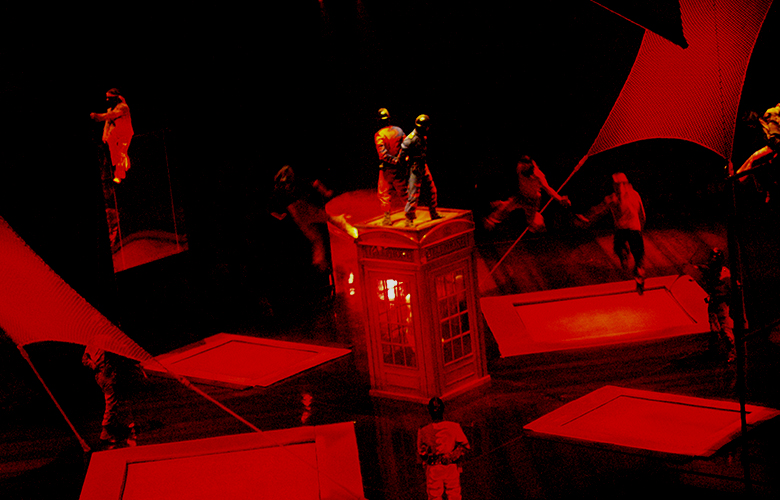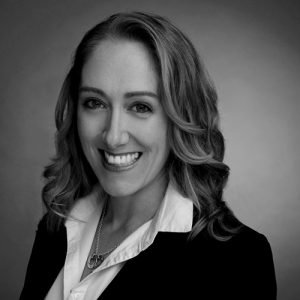
During a creation period, Dave Ball is one of the calmest people in the theatre. It’s a good thing too, considering the lives of aerialists are under his control, flying around at the direction of his automation programming. This is the guy you want on your team when you create a large scale automated show. He is behind the programming of some of the biggest resident shows in the world. He took a moment out of his latest gig in Dubai, to give TheatreArtLife an insight into his career.
There are two that come to mind, both for different reasons. First would be KA by Cirque du Soleil. This is because of the scale of the production (the largest show in the world at the time) and because this was the first show that I programmed. It was learning on the job, I had never programmed before and Chameleon was a relatively new system to the Vegas (having only been used at Zumanity prior to KA).
The other would be The Han Show in Wuhan China. This one was challenging not because of the size but because it had problems in the completion of the theater and the automation equipment. Every theater has delays during construction, but in this case, they did not delay the opening so we were constantly working with a partial system.
For me, the most complex show that I’ve worked on is probably be The Beatles LOVE by Cirque du Soleil at the Mirage. Other shows are bigger but this one had the most variation in automation equipment, straight trollies, diagonal trollies, traps, sloats, and more. A lot of these elements were used simultaneous especially during the opening sequence. LOVE also has most cues per minute of any show I have done to date. I don’t have the exact numbers with me but when I left it had nearly 1.5 cues per minute on average.
Stage Managers! Specifically, Stage Managers that understand the complexities that come with automation and can act as a “go-between” for me to the directors/designers.
A lot of people want things to happen as fast as possible. With automation it takes time to set up what is asked for and it takes time for the people backstage or on the grid to make sure that what is called for, is safe.
Automation gives you theatrical options that can achieve almost anything you can imagine. Not only can you fly people and move the stage, but you can change the structure of the theater itself, turning it inside out. You can get rid of the stage altogether and have a whole show in the air if you want. The only limits are your imagination… and funding.
I learned on the job for the most part. I got my degree in technical theatre with a focus on lighting design because that was what I was the most interested in at the time. Automation was not taught and was not really used as a part of theater shows at the time. When I started working professionally, the jobs that I could get were more in Carpentry than in Lighting. But I saw that automation was starting to become a bigger part of some shows and definitely in the shows on the Vegas strip. When I got hired at the Siegfried and Roy show as an on call carpenter I had an opportunity to observe and learn from the automation crew, a lot of the time just showing up at backup trainings and asking lots of questions.
The sequence that comes to mind was never used or even meant to be in a show. Late one night at KA we had just finished the second show when we were told that a group of investors from Shanghai was coming in the morning and we were asked to write a cue that showed off what the stage can do. I wrote a cue that had the sand-cliff deck raising and tilting 90degrees while spinning at full speed, it would finish spinning tilt back to flat and stop at stage level just in time to slide into position as the other five lifts get into position and the Tatami deck slides in behind it. The size of the stage moving and the way that everything looked like it would collide but fit together perfectly at the last second made it quite a fun cue to watch.
Training in automation has been pretty much ignored by schools and universities out there for a long time. It has been lumped in with Carpentry in some places and just ignored in others.
But it is starting to be recognized as a legitimate stand-alone division of Theatre. The The University of Nevada in Las Vegas (UNLV) is starting to offer some classes in automation, but to learn the practical application and actually use the programs you will need to go to one of the companies directly and sign up for their classes. Also, you could look at working for some of the common starting places like at theme parks or on cruise ships.
You must be good at math and have good problem-solving skills, but I think the most important thing is the ability to stay calm under pressure. Things will go wrong and errors will occur, if you panic you only increase the chance of making a mistake and raise danger level for all involved.
Most of the new automation systems are moving toward being completely SIL 3 compliant. SIL (Safety Integrity Level) has various levels and each require more and more safety checking to make sure that all performers and technicians are working in a safe environment.
A lot of the stuff I have done has been with scenic elements but I mostly work with flying people. To tell you the truth I can’t remember which show had the most people in the air at once. I do remember that The Han Show had 16 people in the air at once on a separate axis. Other shows have had more but many were connected together on the same axis. I have used winches that were capable of travelling as fast as 10meters/second. But the fastest I have actually flown a person is in the 7 to 8meter/second range.
The two systems that I have worked with primarily over my career has been the Stage Technologies Chameleon system and the Tait Navigator system. I have seen many other versions of control software such as Microtrol, Hudson, and others but have not been on a show that has used any of those systems.
I may sound a little biased here but in my opinion, the companies that are leading the way in theatrical automation are combined companies of Tait and Stage Technologies are leading the way on this front. Not only do they have two of the biggest front-end control systems in the world with “Navigator” and “eChameleon” they are also leading the way with innovations in mechanical design and implementation not only with theaters but in concert tours, conventions and theme parks as well.
Usually, when I program a show the operational team will already be in place and the operator who will eventually take over running the show sits next to me from early in the process until the soft opening when they take over fully. This gives them time to watch the process and ask questions as to why I am doing things a certain way. I think that being part of the process helps them to understand the show better so they become more of a show operator and less of a button pusher.
Currently, I am in Dubai working on the new Dragone production La Perle. It’s not as big automation wise as some of the other shows that Franco Dragone has produced but it still has its challenges.
In my down time, I prefer to stay at home with my wife and our three dogs. Just enjoying my time being home, going to the movies, mowing the yard, walking the dogs, spending time with my wife and not having to live in a hotel.
Women Of Automation Part 1: Justine Marie Benoit
Theatrical Automation With Robert Pooley


Anna Robb is Co-Founder and Managing Director for TheatreArtLife. Anna is an experienced Producer/Production Stage Manager. Her 20-year work history spans Asia Pacific, the Americas, Africa, the Middle East and Europe. She has worked for companies such as Cirque du Soleil, Franco Dragone Entertainment Group, Christie Digital Systems and The Sydney Opera House. Anna was an integral part of the research and development, training and formation, creation and operation of the 250 million dollar aquatic show, The House of Dancing Water in Macau. She also maintained the daily operations of this complex show as the head of Stage Management for 7 years. Anna has been employed on over 70 shows in the areas of concerts, arena events, corporate events, trade shows, musical theatre, plays, dance, circus, outdoor festivals and mega shows. Anna holds a honours degree in Design for Theatre and Television and is passionate about the evolution of the industry.
Read Full Profile© 2021 TheatreArtLife. All rights reserved.

Thank you so much for reading, but you have now reached your free article limit for this month.
Our contributors are currently writing more articles for you to enjoy.
To keep reading, all you have to do is become a subscriber and then you can read unlimited articles anytime.
Your investment will help us continue to ignite connections across the globe in live entertainment and build this community for industry professionals.